Changing how music fans buy singles
Traditionally, music labels give new singles to radio stations several weeks before releasing them for sale, in order to build awareness and buzz. But in the digital world this strategy works less well, because instead of waiting, listeners can easily get hold of a pirated copy (or even a legal copy, if the same song is already available as part of an album).
The idea of bringing release dates forward to when songs appear on the radio – known as ‘on air/on sale’ – has been floating around for a while, but it’s a tough step for record labels to take because it transforms the way they promote singles.
Universal Music turned to its private community, Speakerbox, to find out how music fans felt.
Head of research Hanna Chalmers said: “Firstly we had a forum, and secondly we got some people to film themselves talking about what they thought about it. So we had this really useful film to be able to show across the business, as to why this was a really important move.”
Jessie J’s debut single Do it Like a Dude was one of the first to be released in this way, and since January on air/on sale has been standard practice, although there are still some exceptions. Universal continues to use its community to understand what effect it is having on how people buy and listen to music.
For more on how Universal’s community has helped it stay in touch with fans, read our full interview with Chalmers here.
Reinventing a classic snack
Hula Hoops have been around for as long as most people in Britain can remember. This year manufacturer United Biscuits came up with a new variation: Big Hoops.
UB decided to test the product in its private community, Snackrs.com, run by Join the Dots.
Paul Child of Join the Dots said: “We served members a short, punchy online survey, then we invited a different set of people in to a live chat. We placed the product with people taking part so that we could capture feedback as they tried Big Hoops for the first time.
“It threw up lots of positives, but one of the things that was less positive was that it was too salty.
“The problem was in the way the recipe had been scaled up. Because Big Hoops come in 160g share bags, it didn’t feel quite appropriate.”
UB amended the recipe, and the tweaked product is now on the shelves.
Perfecting a mobile TV app
Belgian TV and broadband provider Telenet wanted to be the first in the country to launch a mobile app for watching TV on demand.
To beat its competitors, the firm had just over one month to develop the app, and would have to continue improving it as soon as it was launched.
Telenet approached InSites Consulting, which studied social media discussions before inviting 100 people to take part in a three-week project in a private community.
After discussing how they used the app, members were asked for their ideas on how to make it better.
“In the digital world, things move too fast to think that when your product is launched it’s finished. It’s never finished – it’s always in beta”
Carole Lamarque, Telenet
Dozens of ideas made their way to the development schedule – including the ability to browse by channel rather than by programme, the addition of a home screen with news updates and social media integration.
The number of downloads of the app, called Yelo, hugely exceeded expectations, reaching 100,000 in just over two months. In surveys 83% of users said they were satisfied or very satisfied with Yelo.
Telenet’s marketing director Carole Lamarque says: “In the digital world, things move too fast to think that when your product is launched it’s finished. It’s never finished – it’s always in beta.”
Extending the Activia range
Danone wanted to see how it could extend its Activia range of probiotic yoghurts.
It decided to approach members of its Activia Advisory Board, run by Promise and made up of 400 women.
The two-month new product development project started with a ‘blank canvas’ idea generation phase: members were asked to put themselves in the shoes of the Activia brand manager and come up with rough ideas.
Felix Koch, consultancy director at Promise, explains: “We supplied the community with one concept at a time and invited them to critique elements such as the underlying consumer insight, the format, the packaging or the flavour suggestions… During this detailed process, several iterations of each concept were developed, each getting closer to what consumers wanted.”
Members were then presented with a shortlist of concepts which they rated on various attributes. Danone took the highest-scoring ones into standard market sizing and volumetric tests.
Two new products have been developed as a result: Activia Snackpot, designed to be enjoyed as a snack rather than with a meal, was launched in September 2009, and Activia Pouring Yogurt, designed to complement breakfast, was launched in September 2010.
Presenting the new face of Expedia
Expedia was looking for a way to stand out from its competitors after research suggested consumers saw travel booking sites as “the online version of a ticket machine in a train station”.
Based on this insight, ad agency Ogilvy & Mather came up with the idea of “people-shaped travel”. To explore further how this might be applied beyond just Expedia’s advertising, co-creation agency Face ran two projects: one with Expedia employees and one with 150 consumers at a session in London, followed by groups in London, Stockholm, Berlin, Amsterdam and Milan.
“We broke down the barrier between Expedia employees and people who used Expedia, to create this community of people who were shaping travel”
Andrew Warner, Expedia
Andrew Warner, Expedia’s senior marketing director for EMEA, said: “The consumers got really into it. What we also found in the research was that, having Expedia staff in the room, often consumers would start asking them for advice. We broke down the barrier between Expedia employees and people who used Expedia, to create this community of people who were shaping travel.”
Expedia’s latest TV ads, which present its employees as travel enthusiasts, “are the first part of a journey,” says Warner. “Expedia’s not a bank of servers in a desert, it’s powered by people who travel.”
“People-shaped travel” will continue to inform communications and new product innovations.
Finding what makes a theatre stand out
The Young Vic theatre in London offers young directors the chance to get their productions seen. But it had a problem. If influential critics gave one of its shows a five-star review, it would sell out. But if a production earned a (very respectable) four stars, they struggled to fill half the seats.
The Young Vic approached Sense Worldwide, which recruited a group including devoted theatre fans, refuseniks, influential bloggers and West End impresarios.
As the group interacted through an online portal, it emerged that they didn’t understand what the Young Vic stood for.
ophisticated theatregoers recognised that The Royal Court, for instance, is a writer’s theatre and the Donmar Warehouse is an actor’s theatre. The Young Vic described itself as a director’s theatre – but none of the group could really say what that meant.
So Sense asked people what they got out of the theatre, and many of the answers suggested that it was all about storytelling. “Nobody could articulate what a great director did, but everybody could talk for hours about the power of a great storyteller,” said Sense’s Brian Millar.
This led to the creation of a brand plan that influenced communications, digital engagement and the end of the theatre’s long-standing ‘sit anywhere’ policy. There’s a new strapline – It’s a big world in here – and the theatre’s posters and brochures now aim to give audiences a taste of the story and leave them wanting more.




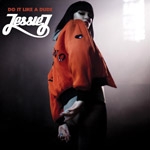
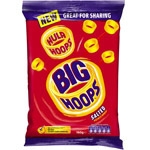
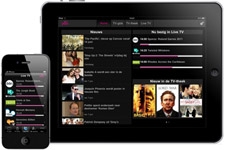
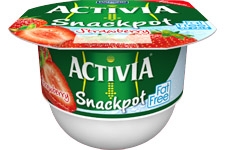
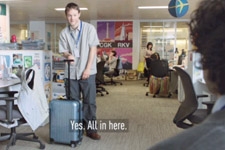


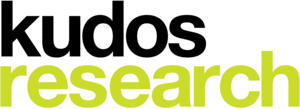

0 Comments